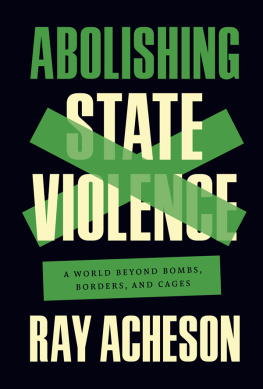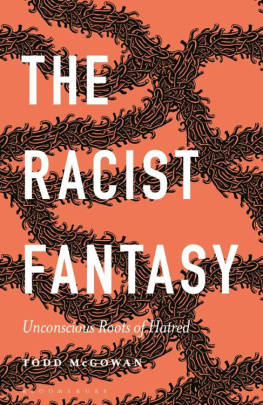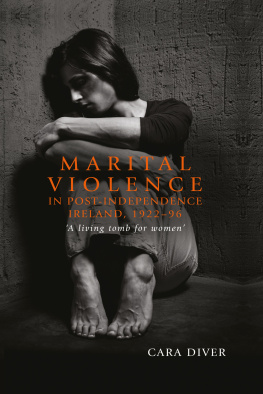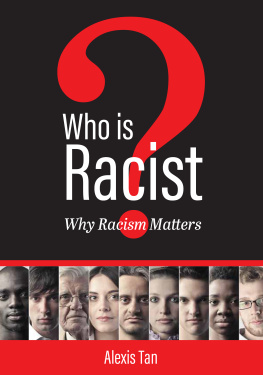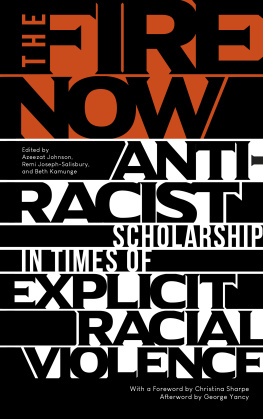RACIST VIOLENCE AND THE STATE
Racist Violence and the State:
a comparative analysis of Britain, France
and the Netherlands
Rob Witte
First published 1996 by Addison Wesley Longman Limited
Published 2014 by Routledge
2 Park Square, Milton Park, Abingdon, Oxon OXI4 4RN
711 Third Avenue, New York, NY 10017, USA
Routledge is an imprint of the Taylor & Francis Group, an informa business
Copyright 1996, Taylor & Francis.
All rights reserved. No part of this book may be reprinted or reproduced or utilised in any form or by any electronic, mechanical, or other means, now known or hereafter invented, including photocopying and recording, or in any information storage or retrieval system, without permission in writing from the publishers.
Notices
Knowledge and best practice in this field are constantly changing. As new research and experience broaden our understanding, changes in research methods, professional practices, or medical treatment may become necessary.
Practitioners and researchers must always rely on their own experience and knowledge in evaluating and using any information, methods, compounds, or experiments described herein. In using such information or methods they should be mindful of their own safety and the safety of others, including parties for whom they have a professional responsibility.
To the fullest extent of the law, neither the Publisher nor the authors, contributors, or editors, assume any liability for any injury and/or damage to persons or property as a matter of products liability, negligence or otherwise, or from any use or operation of any methods, products, instructions, or ideas contained in the material herein.
ISBN 13: 978-0-582-27799-1 (pbk)
British Library Cataloguing-in-Publication Data
A catalogue record for this book is
available from the British Library
Library of Congress Cataloging-in-Publication Data
Witte, Rob.
Racist violence and the state : a comparative analysis of Britain,
France, and the Netherlands / Rob Witte.
p. cm.
Includes bibliographical references and index.
ISBN 0-582-27799-X
1. Europe Race relations. 2. Racism Europe History 20th century. 3. Violence Europe History 20th century. 4. Great Britain Race relations. 5. France Race relations. 6. Netherlands Racist relations. I. Title.
D1056.W58
| 1996 323.1'4'09045 dc20 | 95-48378
CIP |
This book is dedicated to three young men: Ahmed Iqbal Ullah, Djilali Ben Ali and Kerwin Duinmeijer; and to Marja Veenstra.
On Sunday, 30 September 1941, my grandfather lay on the wooden slats that served as his bed in the concentration camp of Amersfoort puzzling over members of the Dutch NSB (the Dutch National-Socialist Movement) torn by pity, rage and anger:
Their political thinking has been twisted by years of economic crisis and swept along by a fascist order and race theories. But to simply think of their guilt is too superficial. Shouldnt we look for this among those who incited them with their degenerate minds.
(Diary of E. Joh. Bulten, no. 230, Aaltense Gijzelaars, 1970: 33)1
More than half-a-century later, people in Europe are still confronted by racist terror from individual incidents to long-lasting processes of day-to-day harassment and violence. This violence may be different in intensity, in extent and in scale to the violence which confronted my grandfather and so many others during the Second World War, but the questions he raised are still relevant to our times.
Both then and now, it is not only the vicious leaders of racist extreme-right organisations who incite perpetrators of racist violence. Perpetrators of racist violence are not only incited to violent acts, but their actions are also often glossed over, tolerated, sometimes even accepted in the mid-1990s Europe. Authorities in general, and state authorities in particular, have a decisive influence on this. Their responses to the seeds and expressions of racism and instances of racist violence are a definitive factor in the way these phenomena determine the day-to-day life of specific groups within European society.
This study describes and analyses the responses by state authorities to racist violence in Britain, France and the Netherlands since 1945. It would have been impossible without the help and assistance of many. I owe special debts of gratitude to my parents, to my supervisors Frank Bovenkerk and Robert Miles, and to John Schuster, Yucel Yeilgz, Jaap van Donselaar, Ben Bowling, Martin Moerings, Tore Bjrgo, Cathie Lloyd, Paddy Farrington and Bernd Lehmann for our discussions and their advice. Their personal warmth proved to be a special stimulus.
I would also like to thank John Solomos, Paul Gordon, Giles Verbunt, Liz Fekete, Marian FitzGerald, Carol Willis, Jan Rath and all the contributors to Racist Violence in Europe (Macmillan, 1993) for their contribution in establishing the theoretical and factual contents of this study. My thanks also go to Alison Bieker, Anne Shaw and Lisa Chason for their assistance with the language.
Science without any actual feeling for, or communication with, people involved in the field of study is the ivory tower kind of science of which I do not approve nor wish to take part in. Therefore I would like to thank all of those in the numerous anti-racism organisations with whom I spoke and worked in these past years, especially those at the Anti Racisme Informatie Centrum (ARIC, Rotterdam) and at the Dutch Landelijke Vereniging van Anti Discriminatie Bureaus (especially at RADAR-Rotterdam and ADB-Noord Kennemerland). Although I am indebted to many people, everything in this volume is my responsibility.
Finally, I would like to thank the people at the Willem Pompe Institute for Criminal Sciences of the University of Utrecht, especially those at the reception, for establishing a good working climate and the people of the Centre for Research in Ethnic Relations at the University of Warwick for my early appointment to an EU fellowship which enabled me to complete my dissertation without worries about employ-ment in the near future.
This book is dedicated to four people. Ahmed Iqbal Ullah (197386, Manchester), Djilali Ben Ali (195671, Paris) and Kerwin Duinmeijer (196883, Amsterdam) were three young persons in each of the countries involved in this study, representing all those who had and have to cope with racist violence, from day-to-day harassing terror to the murder that ended their young lives.
The fourth person to whom this book is dedicated is Marja Veenstra, for coping with me when this study carried me away completely, for discussing every thought, for inspiring me and, most importantly, for just being there.
Rob Witte
Note
This diary has not been published.
Acknowledgements
The publishers are indebted to the following for permission to reproduce copyright material: The Macmillan Press Ltd for the figure Different types of state responses in the four phases of the idealised process of racist violence on its way to the formal agenda in Racist Violence in Europe, T. Bjorgo & R. Witte (eds), 1993. All rights reserved.
In the early 1990s, racist incidents in Europe increasingly attracted international attention. Specifically, the violent attacks against African street vendors in Florence, Italy (1990), the desecration of Jewish graves in Carpentras, France (1990), the racist attacks in Germany against asylum-seekers in Hoyerswerda (1991) and Rostock (1992), and the racist murder of Turkish residents in Mlln (1992) and Solingen (1993) were widely publicised, and stimulated the increasing number of reports of racist incidents in all European countries. Whether there really was more racist violence or not, state authorities were forced to formulate policies and implement measures. This was not limited to local and national authorities; even at a European level initiatives were taken. At the Corfu summit in June 1994, for instance, government leaders of the European Union decided to set up a European Advisory Commission on Tolerance and Understanding of Foreigners. One of its tasks was to formulate general strategies to combat racist violence and expressions of xenophobia.1



